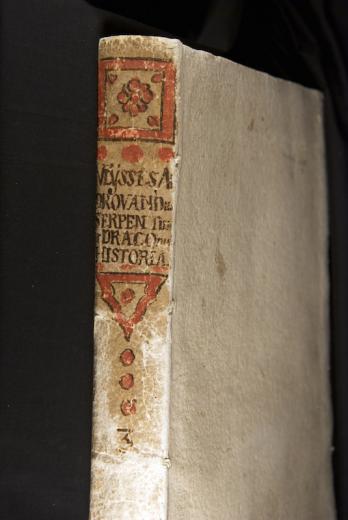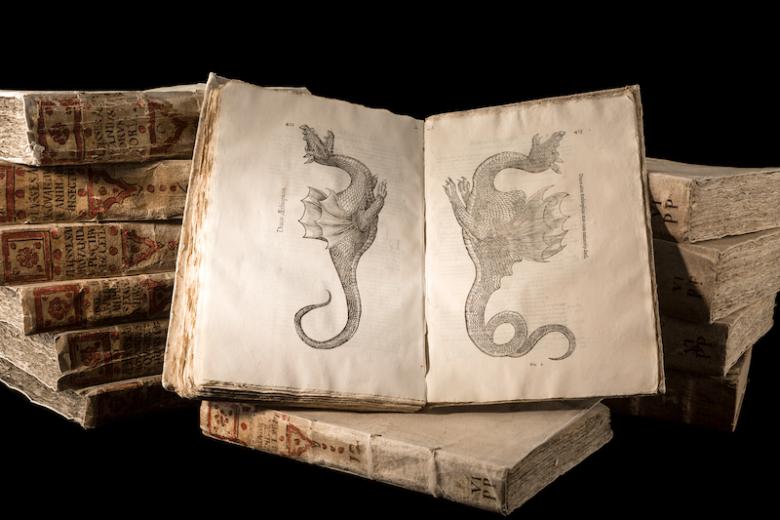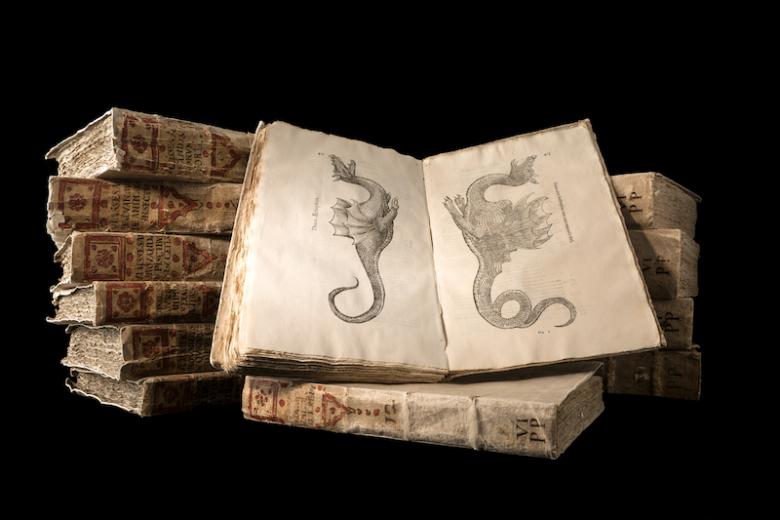Citation
Item Location
Aldrovandi’s study of serpents describes those from northern Italy with great accuracy. Yet other serpents were reported in literature and by recent travelers. Aldrovandi warned the reader that he personally could not vouch for everything he reported, yet he judged it better to let the reader decide than take a risk that a report might be lost. Multiple reports described the dragon. Cardinal Barberini excited the interest of members of the Lynx with a “Little Dragon” specimen, the Dracunculus. Aldrovandi’s massive natural history includes volumes devoted to mammals, birds, fish, trees and minerals. These books were a masterful achievement of emblematic natural history, aiming to document not only an animal’s biology and ecology, but also to place it in the entire web of meanings. Does this animal live in Italy? Does it appear in Homer? What does it mean in iconography, when encountered in a painting or a poem? Aldrovandi’s approach became untenable in the face of an overwhelming number of exotic plants and animals which had no emblematic meaning for Europeans and therefore could not be incorporated into the old way of doing natural history.
Related Items
Resource Type: Book








